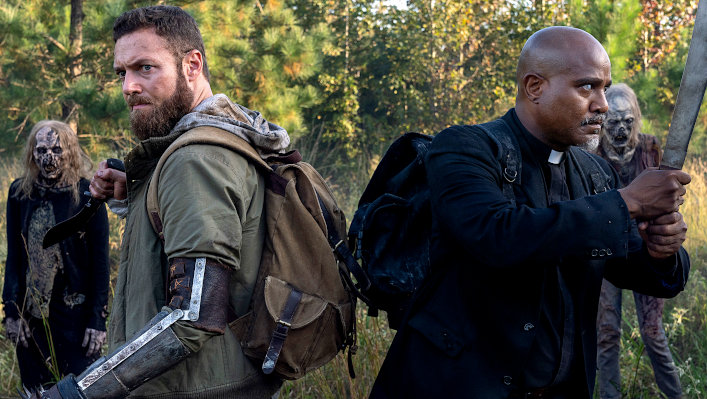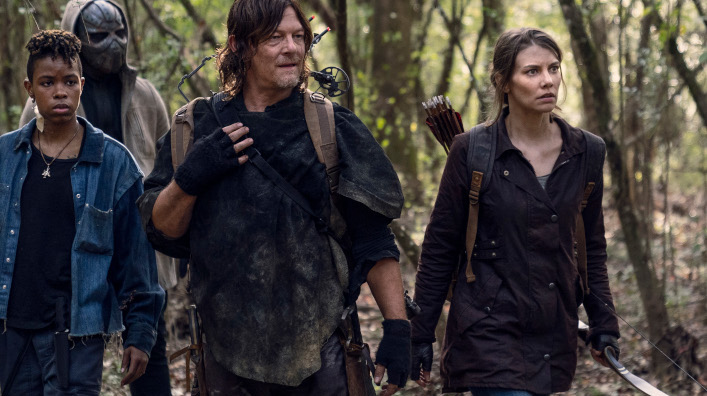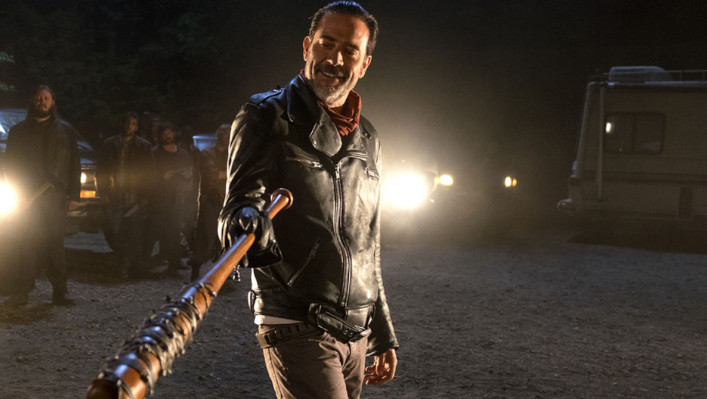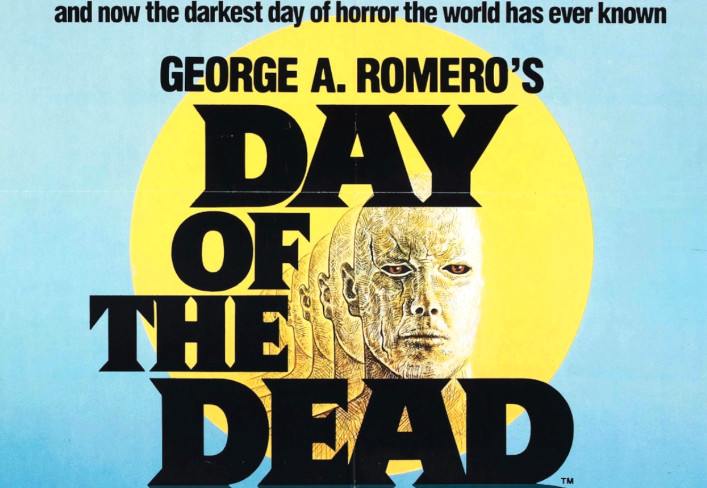Why The Walking Dead is still a juggernaut 10 years later

Legit cultural phenomenon The Walking Dead is in its 10th and penultimate season. With all episodes available on BINGE, and new ones dropping weekly, Anthony O’Connor explains why—after a decade of the decayed—this show is still going gangbusters.
Twas the 31st of October, 2010, when The Walking Dead first shambled onto unsuspecting tellies around the world, ushering in a legit cultural phenomenon. An adaptation of Robert Kirkman’s popular comic book series, it was shepherded onto screens by then-showrunner Frank Darabont (The Shawshank Redemption, The Mist) and has since become one of the most successful TV shows of all time.
The Walking Dead has, at time of writing, spawned two TV spin-offs (Fear the Walking Dead, The Walking Dead: World Beyond) multiple video game adaptations, Walker Stalker conventions for hardcore fans and more merchandise than you could shake a severed walker leg at.
But how did this unlikely little zombie show capture the collective imagination of so many, and why has it remained such an iconic ratings juggernaut? As BINGE begins to air the final six episodes of penultimate season 10, we take a deep dive into what makes this monolithic show such undying entertainment.

Amazing zombies and splatterific gore
For far too long monsters on the telly had been, to use the French term, “pissweak”. Remember in Lost when the big bad was a cloud of poorly-rendered CGI smoke? Ugh. Back in your box, Abrams.
The Walking Dead, however, suffers from no such shortcoming. The zombies in TWD are magnificent, rotting nightmares with faces like dropped pies and skin sloughing off their ripe carcasses in thick, glutinous sheets. The reason for the quality can be summed up in three words: Greg motherflippin’ Nicotero.
Nicotero started creating special make-up effects on Day of the Dead (1985), under the tutelage of the great FX maestro, Tom Savini, and has since been responsible for eye-catching creations in films like The Texas Chainsaw Massacre (2003), The Hills Have Eyes (2006) and The Mist (2007). However, the work Nicotero does on The Walking Dead is next level, particularly on the episodes he directs, bringing his effects-savvy sensibilities and love of the horror genre together in a gleefully macabre showcase of gruesome delights.

Shocks and surprise twists
A long-running TV show can’t live on great zombies and gore alone, however, you need a constantly evolving, frequently surprising story. The Walking Dead thrives on the notion that no-one is safe, no-one is beyond the reaper’s icy grasp, and consequently characters you have grown to love may cark it in spectacularly ugly ways at any time.
[Mild spoilers for earlier seasons of The Walking Dead follow. To skip ’em scroll down to the next section]
Although the first two seasons had been full of shocking moments—Rick (Andrew Lincoln) killing Shane (Jon Bernthal), Dale (Jeffrey DeMunn) being gutted by a zombie, Sophia (Madison Lintz) emerging from that damn barn as a walker—it was season three, episode four that proved the show was taking no prisoners.
In the episode titled Killer Within, Rick’s wife Lori (Sarah Wayne Callies) goes into labour in the prison. However, there are complications and Lori insists Maggie (Lauren Cohan) give her a cesarean that soon kills her, although the baby survives. This all happens in front of her young son Carl (Chandler Riggs) who then has to shoot his dead mum through the head to prevent her coming back as a zombie!
This streak of grim mercilessness continued throughout subsequent seasons, like when Carol (Melissa McBride) is forced to dispatch a burgeoning serial killer (who happens to be a child) in The Grove, or when sweet and affable Noah (Tyler James Williams) gets ripped apart and gobbled up like a party pie.
Of course, the most shocking moment of all occurs during The Day Will Come When You Won’t Be, when Glenn (Steven Yeun) meets Negan (Jeffrey Dean Morgan) and Lucille (a baseball bat wrapped in barbed wire), but we’re not ready to talk about that.

We may never be ready to talk about that.
Cinematic influences
Obviously The Walking Dead owes a lot to zombie movies, particularly the work of George A. Romero. Hell, the walker “rules” employed in TWD are basically those established in Romero’s Night of the Living Dead (1968) and continued in Dawn of the Dead (1978), Day of the Dead (1985), Land of the Dead (2005), Diary of the Dead (2007) and Survival of the Dead (2009). Pleasingly, TWD team aren’t backwards about coming forwards with their homages to the sadly departed father of the genre.
In ‘No Sanctuary’, we can see a box that is identical to the one used in the Romero-directed Creepshow segment ‘The Crate’ (although the Savini-created monster, “Fluffy” is sadly absent). Romero’s Dawn of the Dead is referenced no less than three times! Once in Say The Word with the appearance of a “Flyboy” zombie, once in This Sorrowful Life with the lurching cameo of the flanno-wearing zombie and once in Conquer when Aaron (Ross Marquand) executes a zombie with a machete just like Blade (Tom Savini) did back in 1978.
And, of course, Day of the Dead—the very movie that began Greg Nicotero’s long standing relationship with the ambulatory undead—is referenced in Us with a “Bub” zombie meandering through a dark tunnel.

Other pop culture references occur throughout The Walking Dead’s grisly journey, including nods to An American Werewolf in London (in ‘After’), Breaking Bad (in Bloodletting), Stephen King (Rick was sheriff of fictitious King County), with no doubt plenty more nods and Easter eggs in the season and change to come.
The show has proved itself worthy of all-time greatness in the pop cultural lexicon, and it’s soon to reach its final extended season. Now is the perfect time to get back on board, and see this epic adventure finally reach its no doubt shattering conclusion.
The final six episodes of The Walking Dead season 10 are now dropping weekly on BINGE, with the final season kicking off later in 2021.


















